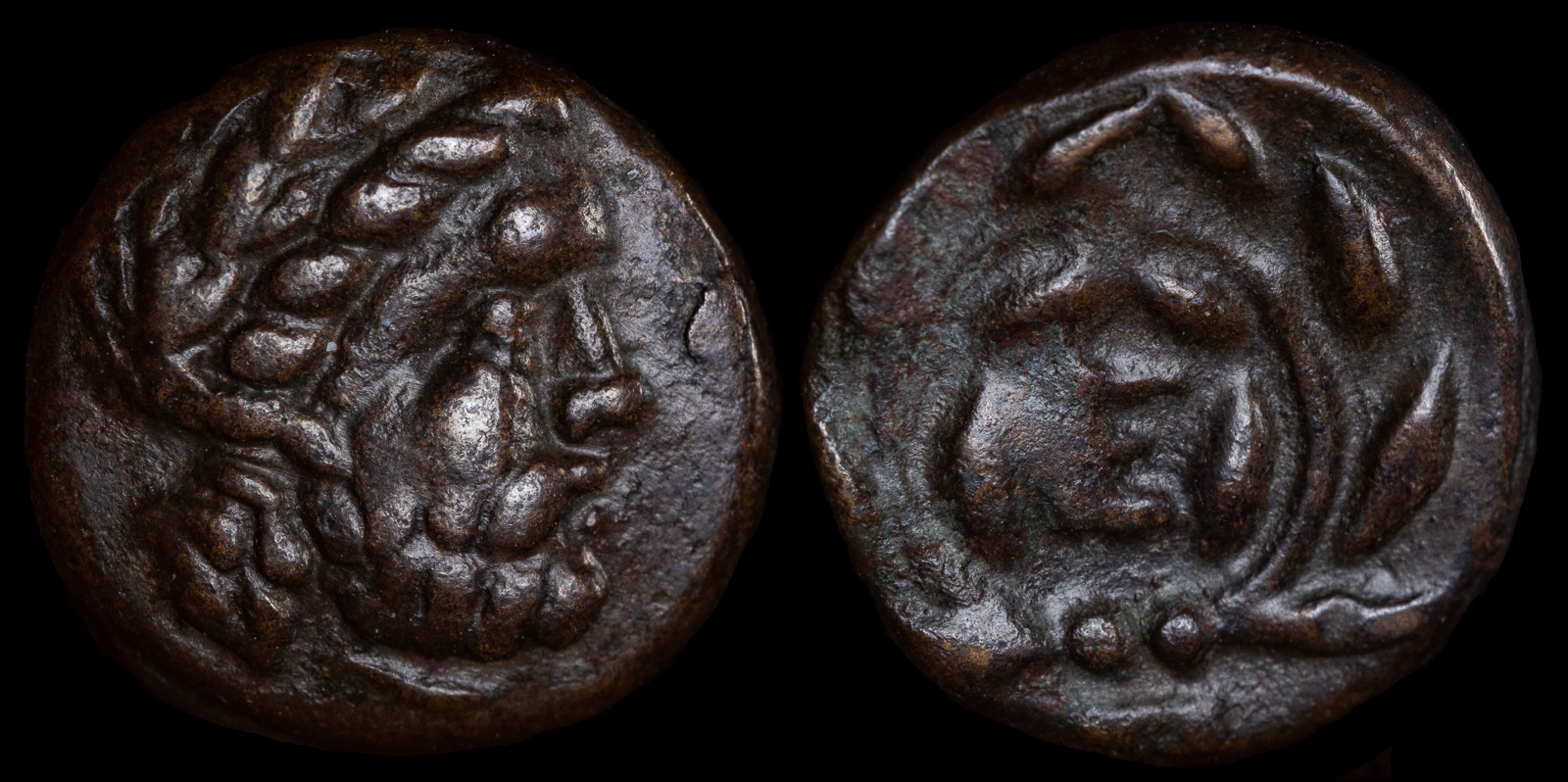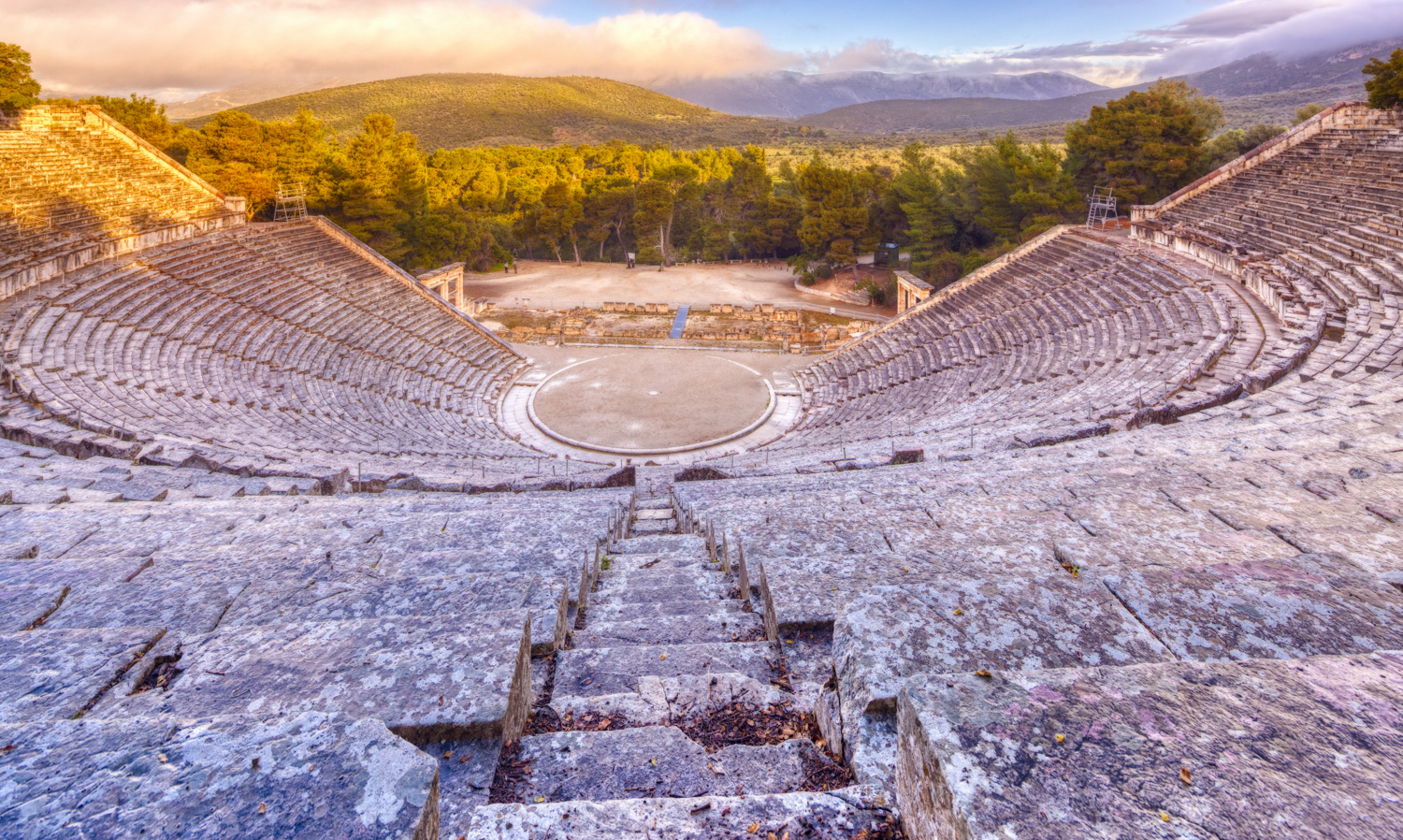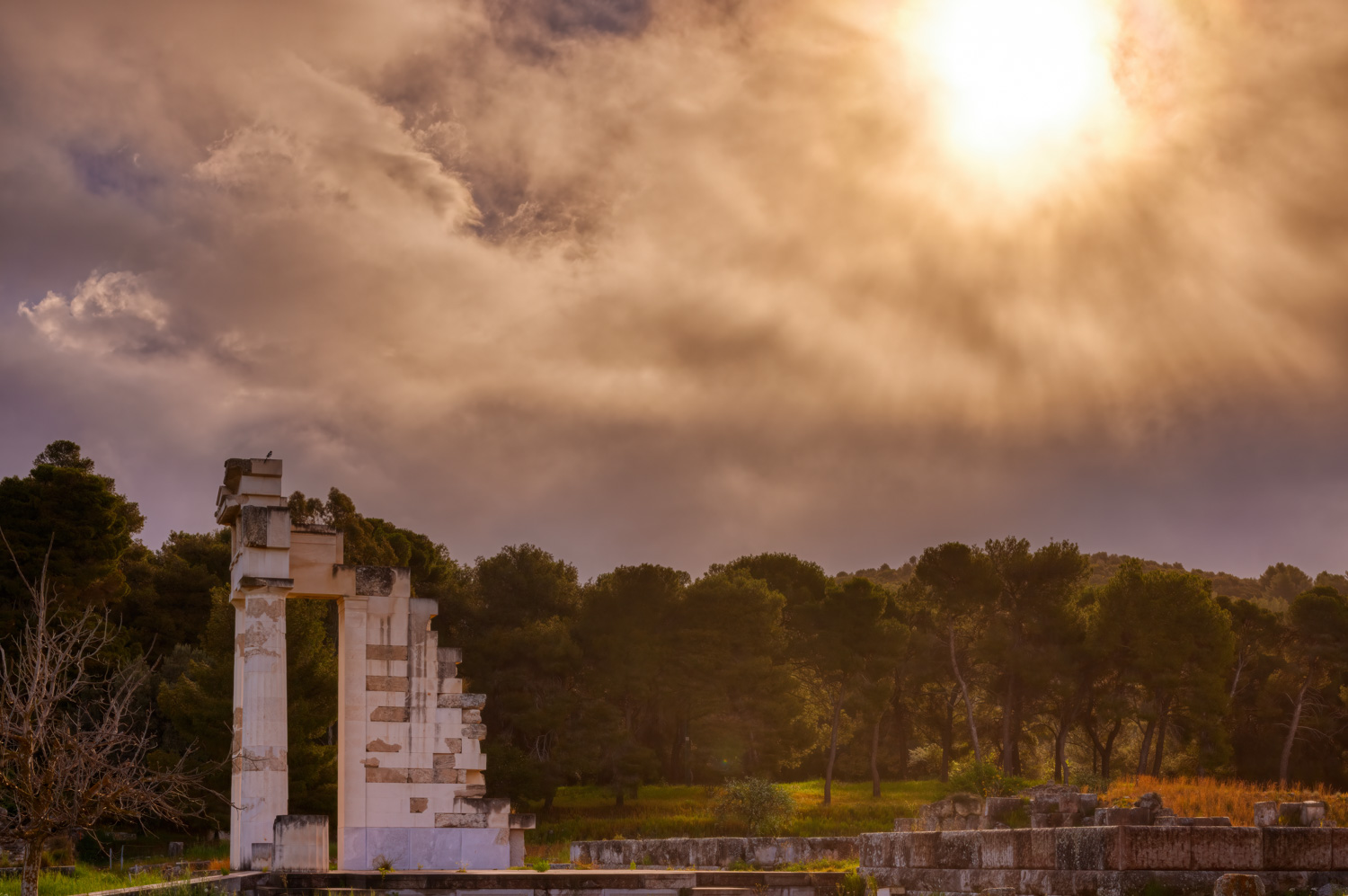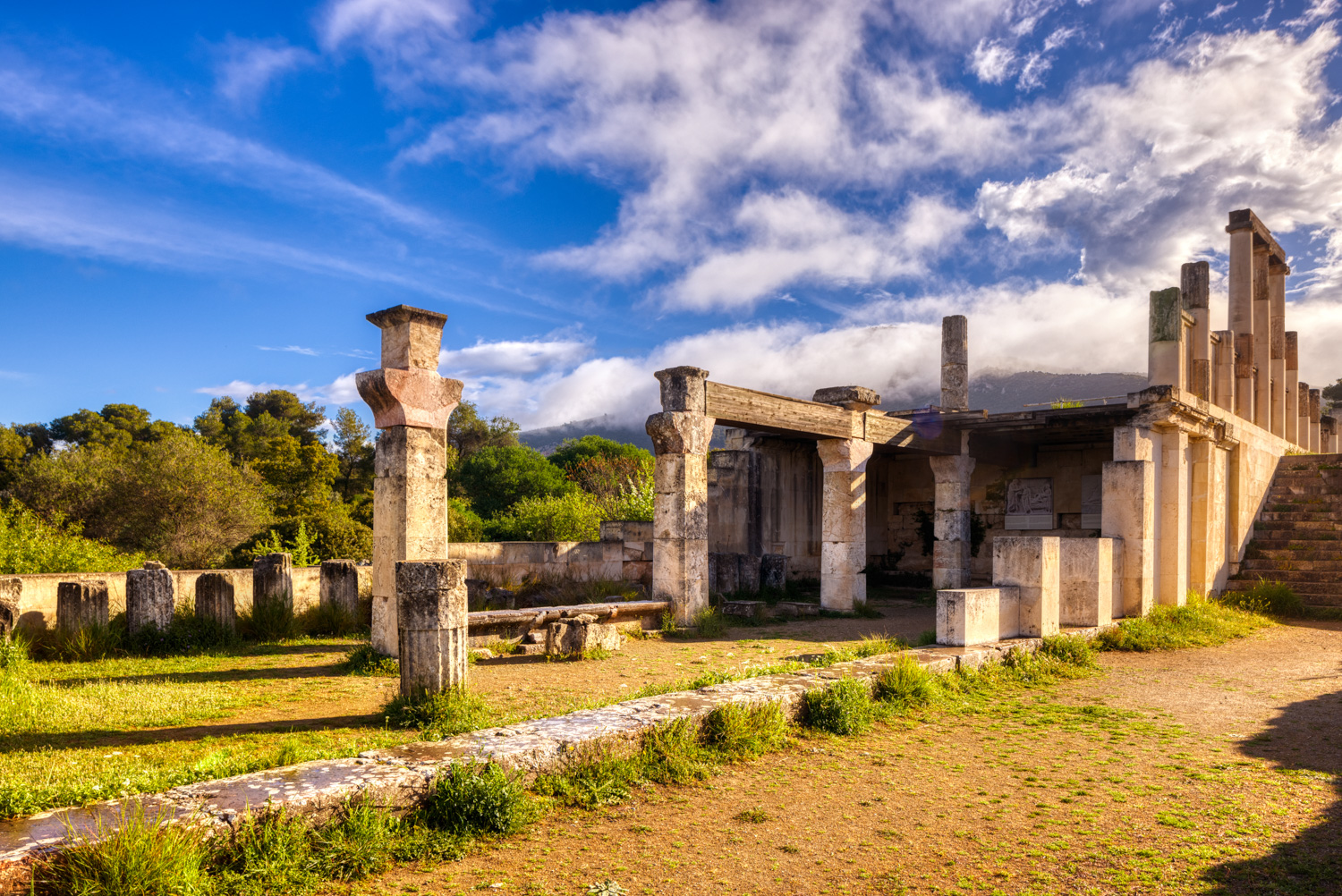
Argolis, Epidauros
Circa 3rd century BCE
Æ 2.03g, 12mm, 7h
Laureate and bearded head of Asklepios to right
E within laurel wreath, Π below
SNG Copenhagen 120
Today, Epidauros is flooded with legions of tourists eager to see the famous theater. Most visit on day trips from Athens and combine it with Mycenae.
While the theater is excellently preserved, in ancient times Epidauros was far more famous for its Sanctuary of Asklepios, part of which still stands. It was one of the first “destination resorts” and could house hundreds of people who probably wished to be cured. This sanctuary and a similar one on Kos were the two most important in Greece.
Supposedly, to be cured of your ailments, you only had to sleep in a large hall, where you would have a dream on what was necessary to cure you. The sanctuary was built roughly around the time this coin was minted. It depicts Asklepios on the obverse, and a laurel wreath with the city name on the reverse. I prioritized it with the planned visit of the ruins.
I of course included Epidauros on my tour of ancient Greece. Here are a few of my photos.




Approximate year for Dorian invasion of Kos, with settlers from Epidauros.
August 7
As a result of their loss at the Battle of Mantineia and an invasion by Epidauros, Argos undergoes an oligarchic coup.
July
Sparta and their allies, including Sikyon and Tegea, defeat Athens and their allies at the Battle of Nemea. On Athens side are Thebes, Lokris Opuntii, and Corinth. With Sparta are Halieis, Sikyon, Epidauros, Troizen, and Hermione. Phlious remains neutral. Pellene fights on the side of Sparta against Thespiai.
The Tholos, a circular building in the sanctuary of Asklepios in Epidauros, is built under the architect Polykleitos the Younger.
The Theatre of Epidauros, also designed by Polykleitos the Younger, is constructed.
Demetrios Poliorketes seizes Epidauros, Sikyon, Corinth, Bura, Argos, and Orchomenos.
Epidauros suffers in the wake of the Kleomenean War, but the sanctuary and city are quickly restored.
The Sanctuary to Asklepios at Epidauros is looted by Sulla.
Julius Caesar, during his campaigns in Greece, visits the sanctuary of Asklepios at Epidauros.
The sanctuary to Asklepios in Epidauros’ infrastructure is upgraded with new Roman baths and improved facilities for visitors.
Emperor Caligula visits Greece and shows interest in the Greek sanctuaries, including that of Asklepios at Epidauros.
Hadrian revives the Sanctuary to Asklepios at Epidauros.
April 6
The author of this page wakes up early and tours Epidauros before the busses arrive.